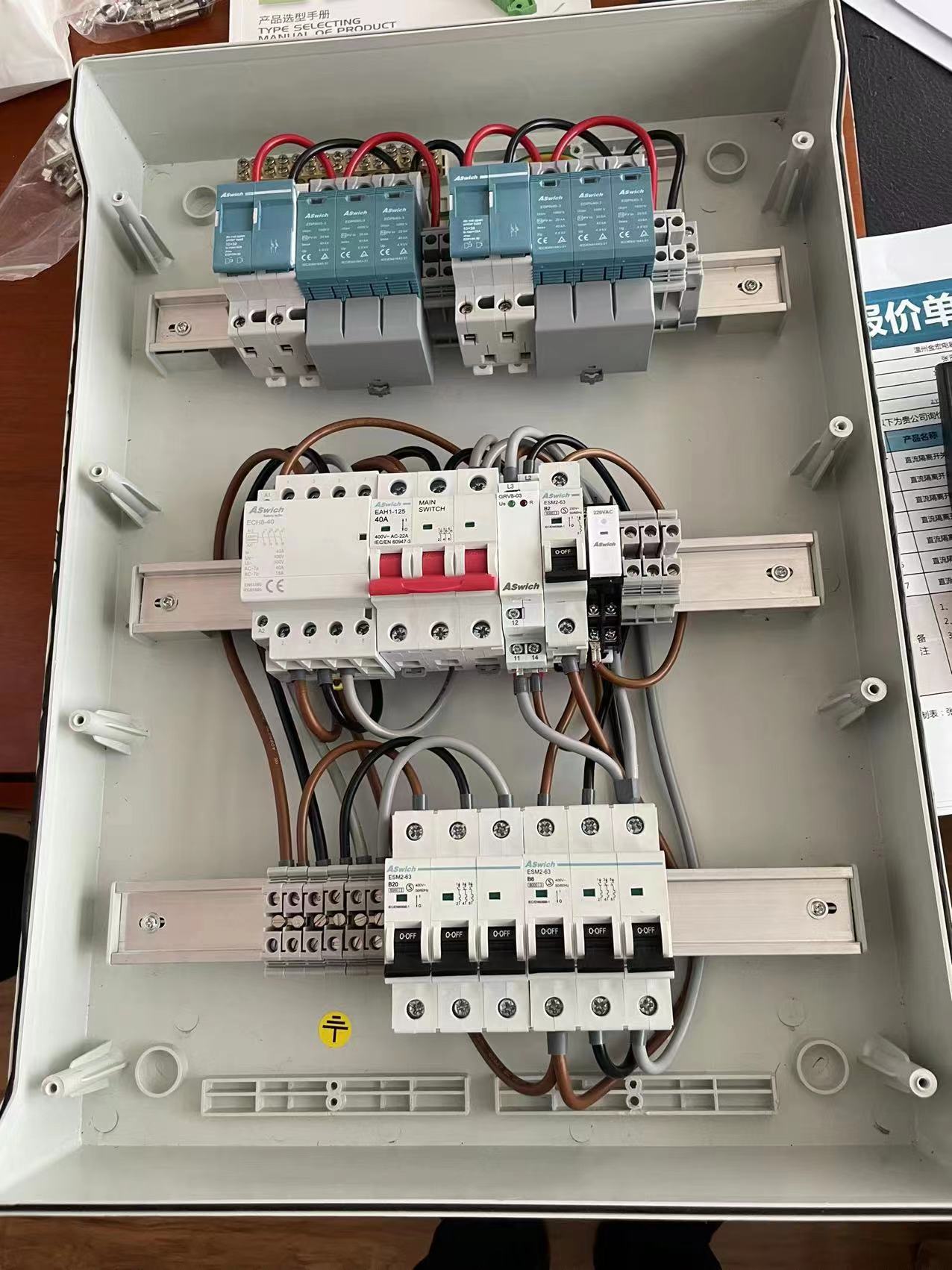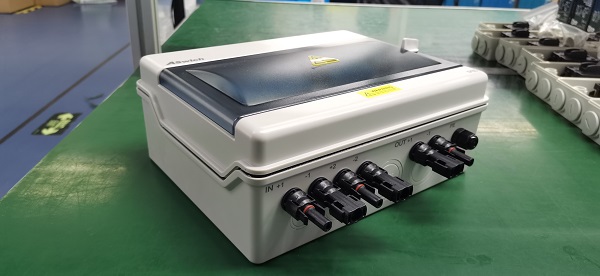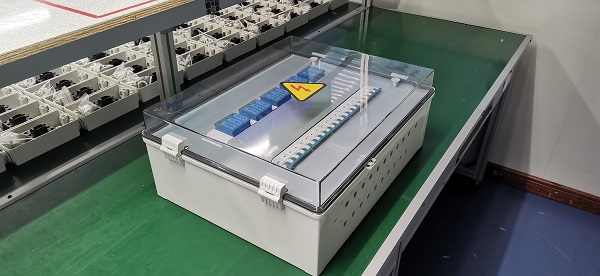A solar combines unit consolidates output from multiple strings of PV modules to connect them to an inverter. Each string of leads is placed at a fuses terminal, and the output from fuses inputs is combined into one conducting line, which is the connection point of the box to the inverter. Each string is attached to a terminal of the fuse; the outputs of the fused inputs are brought together in a single conductor which is connected to the inverter box.
NI Gong, Director of Product Management for Aswich, explained that each strings conducting wires are attached to the fuse terminal, and the output of the fused inputs is combined into a single conductor which connects the combiner box to the inverter. Typically, a solar combiner box houses an overcurrent-protection fuse assembly of the inputs of several strings. As its name suggests, a solar combiner box is used to connect several strings of Photovoltaic (PV) modules to one standard bus.

Solar PV Array Combiners (solar array combiner boxes) are often used to link several solar panels (or strings of panels) to one bus. Busbars are used more often than not to consolidate incoming negative or ground leads from solar panels. Busbars enable you to consolidate several inbound cables into one component. Positive busbars may combine or detach to support two grid-connected inverters or two charge controllers.
Two up to 5-string inverters or one transformerless inverter up to 5-string are supported. This combiner is intended for 1,000V transformerless grid tied inverters which require up to 5 strings. The combiners line-up is suitable for PV systems from as small as two-string off-grid cabs up to 12 strings for 50kW utility-scale grid-tie inverters.
The Aswich range of combiners will accept DIN-mount 150V DC breakers, Midnite Solar 300V DC breakers, Midnite 600V DC breakers, or 600V DC fuse holders for grid tied arrays. Midnite Solar offers a number of transition boxes and PV combiners, ranging from their Aswich through 1000 V to their pre-wired Aswich MC4 combiners.

The box is a straight forward, barebones combox, and you might wish to add additional components like a lightning arrestor, a system monitor, or a quick shutoff component. This particular solar combiner box comes with a schematic, and is easy to install, however, the circuit breakers and fuses need to be purchased separately.
The quality of a combiner box is the most important consideration in choosing one, particularly as this is the first piece of hardware that is connected to the solar modules output. The physical box that houses the combiner components is an enclosure. The combiner box is the key component, since it is the first device that is connected to a solar array.
Plug the wires from your solar panels into the MC4 pair of headers in your combiner box. In most cases, you will see one specific, numbered pair of MC4 connectors for solar panels inputs connected to as many breakers as there are in there. The manufacturer will attach swabs which allow an installer to attach output cables through a solar power connection.
You will want to occasionally check loose connections, just like with all of your solar components. Make sure all the components that you are installing for quick shutdowns in your system are compatible - inverter, wire harness, and a fusion unit, specifically.
In the unlikely case you cannot find wiring information for the solar combiner box, you have two options. The second choice, and the safer choice by far, is to bring your combiner into the hands of a solar installer, and ask him or her to evaluate the situation and sketch out a wiring diagram for you. Let us say you have two individual solar systems running in one box, which would shoot to separate controllers.
The combiner multiplies the current coming out of the strings at higher levels to feed to an inverter. A subcombiner is usually a part of the central inverter, and it aggregates all inputs from a large PV array, which is fed to the inverter for conversion to AC.

Solar combines boxes also combine incoming energy into one primary feed which is distributed across a solar inverter, A solar combiner box may also contain a range of other components, such as line monitoring equipment, a surge protection device, and a DC disconnect. Some manufacturers may include wireless monitoring technology within a combiner box, which allows panel-level, string-level monitoring for current, voltage, and temperature. String combiner boxes form subsystems which can be standardised by the number of strings, voltage, and rated current.
A good string combiner box wiring diagram should include a clean diagram illustration of the box, clearly labeling all the inner components, like the circuit breakers and the bus bars. Most combiner boxes will feature similar layouts and components, even if the brands are different, so the former is likely to be correct if you have a good basic knowledge of electricity. If your combiner box includes this module, it is always good practice to test it for an indicator light after a storm has passed, so that you can tell whether you need a replacement. While enclosures are typically some of the most expensive components in a solar combiner box, they are crucial in getting a long-lasting service out of your box. Ideally, you will want to install your solar combiner box on a wall facing north, where there is available shade.
